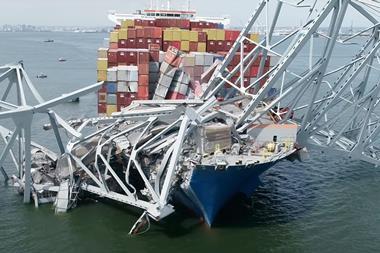Rising competition has pushed OEMs to speed up spare parts delivery, but are they striking the right balance between service, inventory and cost?
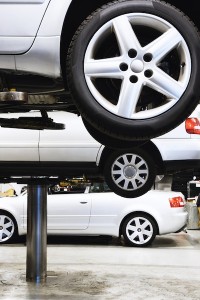 There is no such thing as a risk-proof spare parts operation. Despite supply systems that are more robust and reliable in dealer orders and delivery than a decade ago, manufacturers and logistics providers still face bottlenecks and delays in packaging operations, empty truck miles, and trouble securing appropriate warehouse space across the supply chain.
There is no such thing as a risk-proof spare parts operation. Despite supply systems that are more robust and reliable in dealer orders and delivery than a decade ago, manufacturers and logistics providers still face bottlenecks and delays in packaging operations, empty truck miles, and trouble securing appropriate warehouse space across the supply chain.
In Europe and North America, an ageing vehicle fleet has led to higher spare part volume and more pressure on replenishment, with stiff competition from wholesalers and independent distributors. Carmakers are looking to increase the dynamism and frequency of delivery, but they must do so across legacy networks, systems and processes.
Although some experts point out that spare parts logistics does not always match the efficiency of inbound manufacturing logistics, the industry has made some impressive strides. In many parts of the US and Europe, for example, dealers are now ordering parts daily, with multiple deliveries per day or overnight. Urgent orders can arrive same or next day. Logistics providers and OEMs have developed scaleable networks of distribution centres to match different markets, with greater emphasis on intelligent stock planning and inventory management.
However, the industry faces many challenges. Across OEMs and providers there is still a lack of uniformity between countries when it comes to order processes and delivery frequency, for example. While speed is always a priority, growing cities and varying emission control legislation can make it difficult to set up parts warehouses in the centre of densely populated areas. Customs duties, road tolls and carrier regulations all combine to further complicate the picture.
This is important, because carmakers are looking to logistics to help win back customers who have drifted to tier suppliers, wholesalers and ‘quick fitters’ who often offer cheaper spare parts. “Those players are increasingly looking for new, innovative market approaches in order to capture the OEMs’ market share on spare part distribution,” says Fathi Tlatli, president of the global automotive sector at DHL Global Customer Solutions and Innovation. “They are, for example, evaluating opportunities to offer ‘next-day early morning deliveries’, thanks to late cut-offs.”
For carmakers to compete, they must rely on the size and reach of their own networks and those of their logistics providers, but there are cases in which economic decline stands in the way. Some carmakers have had to adapt their networks in southern European markets, for example, including closing regional parts centres, says Jens Möller, senior vice-president of global automotive at UTi.
In other cases, cost pressures have led to deeper collaboration. There is more sharing of warehouses and even delivery trucks than there has been in the past, with Opel, Ford and others sharing parts of their European networks. Advances in time-critical logistics services, including greater IT visibility, are also helping OEMs to manage their global supply chains.
Mapping out the depots
Warehousing presents many challenges for spare parts velocity and costs. When a part turns up at a source warehouse it often has to be repackaged, adding extra cost and lead time. Nevertheless, manufacturers and logistics providers operate a large network of spare parts warehouses, with many using ten or more in Europe and North America. These range in size from small, local distribution centres to major regional depots, which deliver hundreds of thousands of order lines each day.
Some providers, such as DHL, have developed a grid network specifically adapted to local requirements. In Europe, the company has designed an aftermarket-dedicated concept that integrates different warehouse sizes. The central warehouse is generally used as a first storage location, fed by a variety of manufacturing plants. It’s also known as a ‘global distribution centre’ and can store more than 60,000 parts for multiple model types to be delivered internationally and regionally.
The second type of centre, the regional distribution centre (or ‘national distribution centre’), is typically supplied by the global centre and also delivers directly to dealers. These are usually limited to supplying on a national scale and house up to 40,000 stock-keeping units for car types sold in the area.
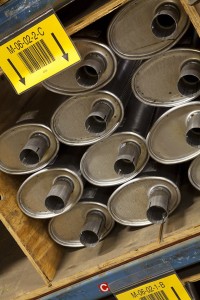
“We can perform weekly fixed quantity replenishment as well as daily same-day replenishment,” says Tlatli. “Some sites perform up to five ‘same-day’ deliveries per day to dealers and one ‘in-night’ for planned repairs.”
TNT Express, with its focus on expedited logistics, operates a slightly different system to DHL’s. According to Nick Beard, global industry director for automotive, TNT manages up to 400 depots across Europe, connected by air and road. TNT supports two supply chains within automotive: the regular distribution of inbound materials and the delivery to dealers of urgent vehicle-off-road (VOR) material.
There are, however, alternatives to the warehousing model. Swiss Post does not currently operate any automotive spare parts warehouses. “In the past, we evaluated whether or not to operate local distribution centres for different car manufacturers,” says Markus Roos, project manager for customer solutions at the company. “However, it was decided that direct importation, cross-docking and parts delivery would be a better solution. We operate small exchange hubs for some customers in our logistics centre to enable moving parts to be delivered quickly to recipients.”
Taking stock: inventory levels and overflow
As customers in some markets opt increasingly to repair older vehicles rather than purchase new ones, there is a growing pressure on stock replenishment. For example, the average age of cars on the road in the US stands at 11.4 years (up from 10 years in 2007), according to IHS Automotive.
To meet this demand, carmakers and logistics providers must manage increasingly imbalanced supply chains. “If it is a standard part, then the dealer will probably have that in stock on site, but if it is an expensive component, the likelihood is that it will have to be ordered from the OEM and this process can take days,” says TNT’s Beard. “This leads to dealer and customer dissatisfaction and ultimately lost customers.”
Stock replenishment strategies differ by OEM or distributor. While carmakers have moved towards low inventory, high replenishment models, including nightly deliveries, independent distributors are often still faster. “I would say that the biggest competition sits more with the independent retailers, like Pit Stop, for example,” says UTi’s Möller. “They drive speed of service, particular on more commodity parts.”
"We can perform weekly fixed quantity replenishment as well as daily same-day replenishment. Some sites perform up to five ‘same-day’ deliveries per day to dealers and one ‘in-night’ for planned repairs" - Fathi Tlati, DHL
For most of Ceva Logistics’ OEM customers, replenishment frequency is daily and target fill rates vary from warehouse to warehouse depending on service targets. Charles Roth and Chris Senior – respectively, logistics director of business development and global key account director for automotive at Ceva – say that 10-15 years ago, dealers started placing stock orders on a weekly basis and emergency orders every day, usually with a target of next-day delivery. However, over the last decade, there’s been a steady trend towards daily stock orders. [sam_ad id=6 codes='true']
Typically, daily stock orders are placed on ‘day one’, they explain, picked and shipped on ‘day two’ and delivered during the night before the dealer opens on ‘day three’.
Usually, urgent orders are combined with stock orders from the previous day. So if a daily order is made on ‘day one’, and the urgent order comes in the next day, it would be picked and shipped that same day and delivered with the prior day’s stock orders before the next morning. Such pick sequencing improves truck utilisation. Nevertheless, a number of dealers are still served by the weekly stock order and separate delivery of urgent orders, according to Senior and Roth.

To maintain distribution centre performance, says Tlatli, ‘frozen inventory’ optimisation is essential, whereby the cost of holding products and parts begins to mount with lack of demand. “DHL is capable of supporting the management of these exceptions, and even to proactively work in co-operation with its customers in order to limit the impact of these challenges.”
Responding to emergencies
It seems hard to believe now, but there was once a time when OEMs limited the type and number of parts that could be ordered for urgent supply. “That said,” comments Ceva’s Chris Senior, “one of the concepts at the heart of the local distribution centre model of supply is that local distribution centres should focus on highly competitive parts that can be part of a rapid repair to get the customer’s car back on the road as quickly as possible.”
With this in mind, stocking headlamps and bumpers is commonplace at local centres, but they would not hold stock engines, gearboxes or major crash parts. These latter items make up a planned repair system, which would be scheduled several days in advance. “The concept of parts that represent a vehicle off-road has been diluted over the years... nowadays the decision on priority tends to be left more to the discretion of the customer and dealer,” says Senior.
There are times when urgency is required of both providers and manufacturers. Time-sensitive repairs make up an important, though challenging, portion of spare parts operations. TNT provides a number of time-critical services for both inbound and spare parts, which are monitored using 22 automotive control centres across the world.
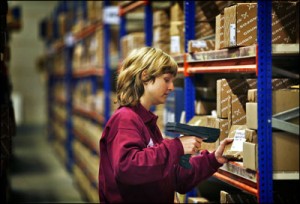
At Ceva, the trend to emergency service is for delivery in less than 24 hours from order time. The order cut-off is late in the day at five or six o’clock in the evening, with overnight delivery before seven or eight the next morning. “There are also OEMs working with local distribution centres that carry stock of fast moving, fast repair parts and offer same day deliveries to dealers in the vicinity of the local distribution centre,” says Charles Roth.
These local distribution centres help improve emergency repair times, while also cutting dealer investments in stock, although they do tend to transfer cost from the dealer to the OEM.
DHL also leverages its express network to deliver vehicle-off-road shipments to customers requiring urgent delivery of parts not available in the dealer-facing warehouse. “Dealers benefitting from the local distribution centre services can receive orders up to five times a day and within four hours after the order release,” says Tlatli. “This setup is sufficient in order to cover a large majority of emergency repairs.
"The use of shared warehouses tends to be limited to opportunistic examples... [whereas] in transport, there has definitely been more of a push to make savings by sharing delivery services" - Charles Roth, Ceva Logistics
“However, we know that there is no such thing as zero risk in the automotive supply chain,” he adds.
Eric Zürcher, head of in-night, express and courier operations at Swiss Post, highlights that while some countries may be better equipped to carry out time-critical operations and enjoy advantageous weather and road conditions, others have to factor in more challenges. “Courier delivery poses a particular challenge due to the nature of Switzerland’s topography, with its mountains, tunnels and valleys, and requires specific knowledge of the area,” he says.
A problem shared…
Some logistics providers have encouraged more collaboration in warehouses, and even trucking, to improve spare parts service and cost. According to Ceva’s Charles Roth, however, OEMs in both Europe and the US still tend to operate dedicated regional distribution centres, “even though there would be cost savings possible by operating more shared facilities”.
“Today, the use of shared warehouses tends to be limited to opportunistic examples, where one OEM has excess space and is able to share that with another. On transport, there has definitely been more of a push to make savings by sharing delivery services. We currently operate shared user deliveries for OEMs in the UK, Italy and the US,” he adds.
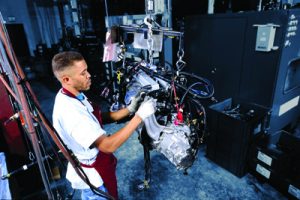
“We can reduce space a little bit on return shipments,” says Kai Rabe, Vauxhall/Opel’s logistics manager, “so we can decide which dealer will ship the empty containers back. If the parts are arriving at the same hub, though, they can go on the same vehicle together.”
Jens Möller at UTi also sees scope for shared transport, including inbound and spare parts deliveries. “Firstly, on the replenishment side of an aftermarket supply chain, the production and aftermarket organisation within one OEM needs to figure out how best to drive synergies into the supply chain by picking up from the same supply base,” he says.
Möller adds that local service requirements and the last-mile network capabilities of service providers often drive this type of distribution. For example, providers might deliver multiple brands through their overnight network to dealers in close proximity of each other near major cities.
Putting the aftermarket online?
E-commerce and IT solutions will likely provide the backbone for much of the aftermarket industry’s future, both in terms of sales and logistics. Earlier this year, for instance, Delphi Automotive and Uni-Select launched a telematics solution for its 5,000 repair shops in Canada and the US. SmartLink, a wireless communication tool, makes use of all connection routes and allows car owners to place their vehicles within an extended network. Similarly, Intex Auto Parts recently launched a mobile platform for its aftermarket operations, allowing customers to order online and connect with repair facilities on the move. Innovations such as these are likely to grow as manufacturers and distributors make use of the speed and clarity such technology provides, particularly in emergency situations.

“Key to those operations is having standardised processes and consistency in execution,” he says. “For that particular reason it is essential for service providers to be able to replicate services and best practices to ensure a regional distribution centre operation, be it in the US or in Germany as well as in South Africa or India, which can be implemented and run in a highly comparable fashion.
“Sourcing of external distribution centre providers should therefore be evaluated not only on local capabilities but more importantly around global replication capabilities of a service provider.”
Ultimately, although technology and replenishment processes are now more advanced, providers see plenty of room to improve the cost and efficiency of spare parts logistics. Service parts, replenishment stock and collision material should each be able to move at different velocity thanks to improvements in vehicle technology, but there are often delays to certain parts such as those involved in collision because of the need for insurance approvals. The exception, says TNT’s Beard, is VOR parts, which move fastest.
While shortening an overall order-to-delivery cycle is dependent on exactly where parts come from, the increased pre-ordering of parts, supported by more time-critical services, may allow an upturn in the fortunes of suppliers and manufacturers keen to get cars back on the road.
This article has been amended from its original version to correct a mistaken quote from UTi. In the original version, the provider was said to have pulled out of Spain. It has not. Rather, several OEMs have closed a number of regional parts centres in southern Europe.





















